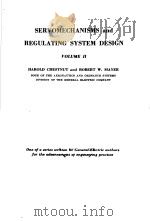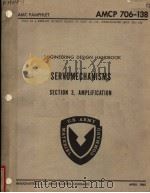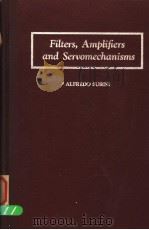《SERVOMECHANISMS》
| 作者 | P.L.TAYLOR 编者 |
|---|---|
| 出版 | LONGMANS |
| 参考页数 | 418 |
| 出版时间 | 1960(求助前请核对) 目录预览 |
| ISBN号 | 无 — 求助条款 |
| PDF编号 | 813238908(仅供预览,未存储实际文件) |
| 求助格式 | 扫描PDF(若分多册发行,每次仅能受理1册) |

PART Ⅰ3
CHAPTER 1.Introduction3
1.1The Background of Automatic Control3
1.2 The Functions of a Human Operator4
1.3 Replacing the Human Operator4
1.4 The Behaviour of a Simple Servomechanism6
1.5 The Problem of Sta?ilisation7
1.6 Closed-Loop Systems as Regulators9
1.7 Open-Loop Control Systems10
1.8 Two Important Equations and a Definition13
Notes22
CHAPTER 2.Data Transmission23
2.1Introduction23
2.2 D.C.Systems25
2.3 A.C.Systems30
2.4 Miscellaneous Systems35
2.5 Error Measurement38
Notes43
CHAPTER 3.Data Computation45
3.1Introduction45
3.2 Digital Machines47
3.3 Analogue Computers:Some Non-Mathematical Considerations51
3.4 Mathematical Operations55
3.5 The Solution of Explicit Equations:Function Generation65
3.6 The Solution of Implicit Equations70
3.7 The Solution of Differential Equations73
3.8 Simulators74
Notes76
PART Ⅱ79
CHAPTER 4.Stability and Performance79
4.1Systems with Viscous Damping and Velocity Damping79
4.2 Error-Rate or Derivative Damping83
4.3 Transient Velocity Damping85
4.4 Stabilisation by the Insertion of a Network86
4.5 Integral Control89
4.6 The Classification of Servomechanisms92
4.7 Class O Systems:Regulators96
Notes101
CHAPTER 5.Feedback Amplifiers103
5.1Introduction103
5.2 Negative Feedback Amplifiers105
5.3 The Stability of Feedback Amplifiers117
Notes118
CHAPTER 6.D.C.Machines119
6.1General Principles119
6.2 The D.C.Motor and Load123
6.3 The D.C.Generator128
6.4 Circuit Principles131
6.5 Some Common Machine Combinations136
Notes141
CHAPTER 7.Multistage Rotary Amplifiers142
7.1Introduction142
7.2 The Amplidyne and Metadyne143
7.3 The Magnicon148
7.4 The Rototrol152
7.5 The Magnavolt154
7.6 Summary157
Notes158
CHAPTER 8.Static Amplifiers160
8.1Introduction160
8.2 Single-sided Amplifiers with Feedback161
8.3 Push-pull Amplifiers167
8.4 Direct-Coupled Amplifiers171
8.5 Power Amplifiers174
Notes182
CHAPTER 9.Phase-Sensitive Rectifiers184
9.1Introduction184
9.2 Multiplicative Rectifiers184
9.3 Additive Rectifiers189
9.4 Sampling Rectifiers190
CRAFTER 10.Miscellaneous Drives193
10.1D.C.Motors193
10.2 A.C.Motors197
10.3 Intermittent Drives198
10.4 Clutch Drives200
10.5 Restricted Motion Motors200
Notes204
CHAPTER 11.Hydraulic Systems205
11.1Motors and Pumps205
11.2 Constant-Pressure Systems208
11.3 Analysis of the Hydraulic Drive213
11.4 Pneumatic Systems216
CHAPTER 12.Non-Linearity218
12.1The Meaning of Linearity218
12.2 Large-Signal Non-Linearities220
12.3 Small-Signal Non-Linearities229
Notes233
CHAPTER 13.Setting up the Equations of Motion234
13.1Setting up the System Equations234
13.2 Orderliness and Explicitness are Essential240
13.3 An Examplc240
PART Ⅲ249
Introduction to Part Ⅲ249
CHAPTER 14.Properties of Linear Systems251
14.1Some Theorems of Fundamental Importance251
14.2 The"Classical"Method of Solution of Differential Equations253
14.3 Stability255
14.4 Driving Functions256
14.5 The Superposition Integral257
CHAPTER 15.The Theory of the Complex Variable262
15.1Complex Numbers262
15.2 Functions of the Complex Variable265
15.3 Complex Integration273
Notes278
CHAPTER 16.The Laplace Transform279
16.1Introduction279
16.2 The Fourier-Mellin Theorem280
16.3 Transforms of Some Operations281
16.4 Transforms of Some Simple Time-Functions285
16.5 Inverse Transformation287
16.6 The Use of the Laplace Transform to Solve Differential Equations289
Notes292
CHAPTER 17.The Transient and Steady-State Harmonic Response of Linear Systems294
17.1Transforming the Basic Equation294
17.2 The Impulse Response295
17.3 Stability and Performance302
17.4 The Steady-State Harmonic Response of Linear Systems307
Notes318
CHAPTER 18.The Transient Response of Closed-Loop Systems320
18.1Introduction320
18.2 The Root-Locus Method321
18.3 Interpreting the Root-Locus Diagram328
18.4 Designing a Servomechanism with the Aid of a Root-Locus Diagram330
18.5 An Example332
18.6 Conclusions338
Notes339
CHAPTER 19.The Steady-State Harmonic Response of Closed-Loop Systems340
19.1Determining the Closed-Loop Response from the Open-Loop Response340
19.2 Stability344
19.3 Designing for Adequate Stability350
19.4 Relations between Magnification and Phase-Shift354
19.5 The Ideal Feedback Characteristic361
19.6 An Example364
19.7 Conclusions373
Notes375
Appendix378
Ⅰ.Determination of the Roots of Polynomial Equations378
Ⅱ.The Rules of Complex Algebra380
Ⅲ.Short Table of Transform Pairs382
Ⅳ.Table of Values of Magnification and Phase-Shift383
Problems385
Answers to Problems401
References408
Index413
1960《SERVOMECHANISMS》由于是年代较久的资料都绝版了,几乎不可能购买到实物。如果大家为了学习确实需要,可向博主求助其电子版PDF文件(由P.L.TAYLOR 1960 LONGMANS 出版的版本) 。对合法合规的求助,我会当即受理并将下载地址发送给你。
高度相关资料
-
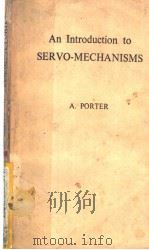
- INTRODUCTION TO SERVOMECHANISMS
- LONDON·METHUEN & CO
-
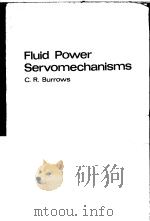
- FLUID POWER SERVOMECHANISMS
- VAN NOSTRAND REINHOLD COMPANY
-

- SERVOMECHANISMS AND REGULATING SYSTEM DESIGN VOLUME II
- 1955 ONE OF A SERIES WRITTEN BY GENERAL ELECTRIC AUTHORS FOR THE ADVANCEMENT OF ENGINEERING PRACTICE
-

- TEXTBOOK OF SERVOMECHANISMS
- 1953 ENGLISH UNIVERSITIES PRESS
-

- TEXTBOOK OF SERVOMECHANISMS
- 1955 ENGLISH UNIVERSITIES PRESS LTD
-
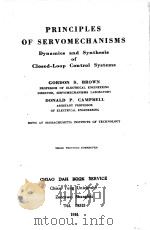
- PRINCIPLES OF SERVOMECHANISMS DYNAMICS AND SYNTHESIS OF CLOSED-LOOP CONTROL SYSTEMS THIRD PRINTING C
- 1951 CHIAO DAH BOOK SERVICE
-

- INTRODUCTION TO SERVOMECHANISMS
- 1954 LONDON METHUEN & CO.LTD.
-
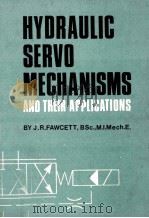
- HYDRAULIC SERVOMECHANISMS AND THEIR APPLICATIONS
- 1970 TRADE AND TECHNICAL PRESS LTD
-

- ANALYSIS OF FEEDBACK CONTROL SYSTEMS SERVOMECHANISMS AND AUTOMATIC REGULATORS
- 1955 MCGRAW-HILL BOOK COMPANY LTD.
提示:百度云已更名为百度网盘(百度盘),天翼云盘、微盘下载地址……暂未提供。➥ PDF文字可复制化或转WORD
